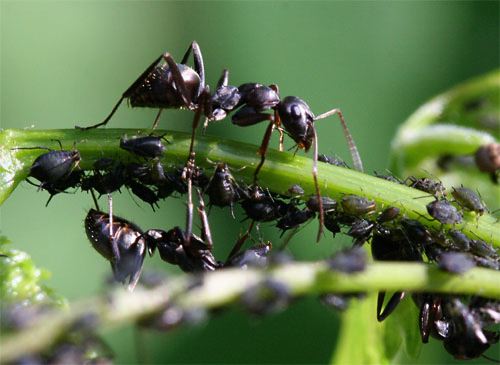
Introduction:
Many species on this earth have evolved to create very unique relationships with each other. One of the most unique relationships is that of the shrimp and goby. These creatures have a mutualistic relationship with each other and is it suggested that without one another, they would not live very long. Together, they live in a burrowed out home usually found on the sandy ocean floor. While the shrimp digs out the home, the goby stays watches out for the blind shrimp like a watchdog. Through the cooperation of both, these creatures thrive in the scary world of the ocean.
The goby fish are from the family Gobiidae. This family of fish contains 2,200 species of fish. [2] . Many of these gobies are known to have the mutualistic relationship with the shrimp.A perfect example of this relationship is the relationship of the yellow watchman goby, or the Cyrptocentrus cinctus, and the tiger pistol shrimp, or the Alpheus bellulus. The yellow watchman goby is a yellow colored goby and the tiger pistol shrimp is a tanned bodied shrimp that is characterized with rust colored broken stripes running across their backs. [3][4]


The tiger pistol shrimp reproduce sexually. From the laid eggs, they develop into adults. As with the gobies, the adults are the ones known to make this unusual relationship. The typical lifespan of this shrimp is from 5-8 years. [8]
The Relationship:
One of the reastons as to why the yellow watchman goby and the tiger pistol shrimp have evolved this interesting relationship, is because this particular species of goby are horrible burrowers and the tiger pistol shrimp are blind. Both of these traits, without help, can lead these organisms to being an easy prey. When combined together, they almost complete one another: This goby in opposite to the shrimp can see and the shrimp are wonderful burrowers. It is because of these traits that these two creatures have adapted to living together.
One of main questions is as to how these organisms go about finding each other? It has been suggested that the goby is attracted to the sight of the blind shrimp while the shrimp is chemically attracted to the goby. This means if the shrimp senses any chemicals that are related to the said goby, they will make their way to them. With the goby, if the goby sees a blind shrimp or their burrow, they will swim their way to them. Either way, they will find each other and will set up their mutualistic relationship. [13]
Benefits:
The benefits of the shrimp are that they receive protection from any harm and will be granted a guide through the scary seawaters. The benefits of the goby are that they have a home and will not have to worry about the home falling in because of the shrimp’s constant maintenance of the home. In this, they receive shelter. Also, the tiger pistol shrimp is known to share its food with the goby. [14]
Costs:
The costs of the shrimp are that they cannot live without the guidance/protection of the goby. Because they are blind, they are completely reliant on the goby’s guiding and their protection. The goby in return cannot burrow a hole properly. Without the shrimp, they would have to find alternative methods of a home. In most places in the ocean world, an empty hole would be hard to find. The goby is almost completely reliant on the shrimp for finding a home.
3. http://www.reeftime.com/profiles/gobies-blennies/yellow-watchman-goby/100024.htm
4. http://www.midwestmarineguy.com/marine-life-kb/invertebrates/id/tiger-pistol-shrimp
6. http://sea.sheddaquarium.org/sea/fact_sheets.asp?id=81
7. http://www.fishforums.net/index.php?/topic/224606-yellow-watchman-goby/
8. http://www.theaquariumwiki.com/Alpheus_bellulus
9. http://www.liveaquaria.com/PIC/article.cfm?aid=201
11. http://blog.nus.edu.sg/lsm2251student/files/2010/04/Goby-Shrimp-Interaction.pdf
13. http://www.explorebiodiversity.com/Hawaii/Shrimp-goby/general/Pair%20Formation.htm
14. http://animal.discovery.com/videos/top-10-odd-animal-couples-shrimp-a-goby.html
15. http://www.youtube.com/watch?v=j-WoVNs62KE

























